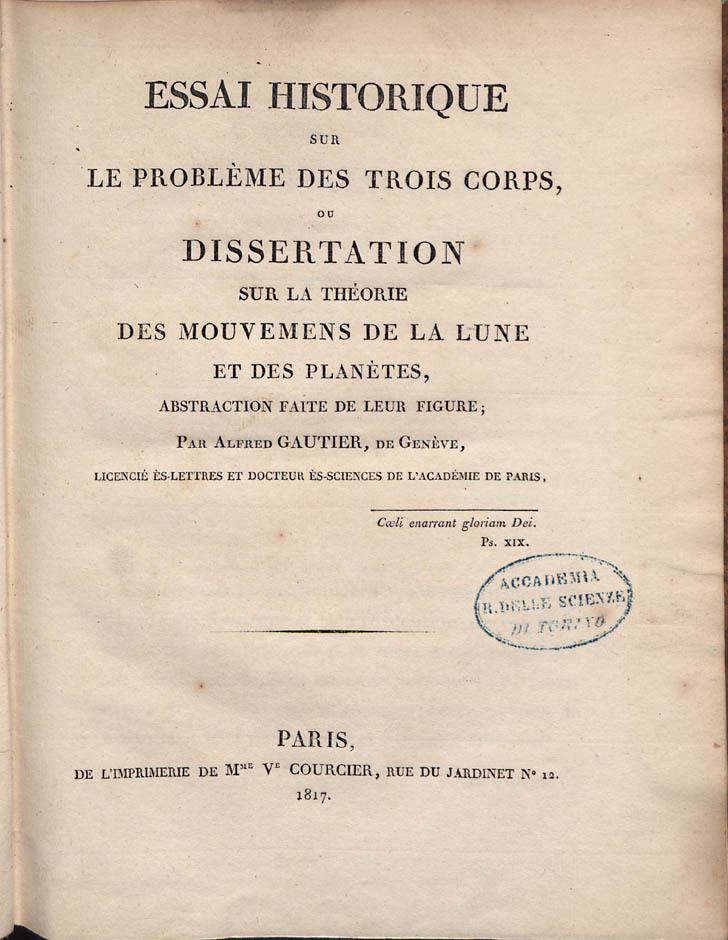Other names Alfred Gautier Role Astronomer | Name Jean-Alfred Gautier Fields Mathematics, Astronomy | |
 | ||
Born July 17, 1793Cologny (Switzerland) ( 1793-07-17 ) Thesis Essai historique sur le probleme des trois corps (1817) Known for Research on concomitance between sunspot cycle period and geomagnetic activity Died November 30, 1881, Geneva, Switzerland Influenced by Pierre-Simon Laplace, Joseph-Louis Lagrange, Adrien-Marie Legendre Institution Geneva Observatory, University of Geneva | ||
Jean-Alfred Gautier or Alfred Gautier (17 July 1793 – 30 November 1881) was a Swiss astronomer.
Biography
He was born in Cologny. He was the son of François Gautier, merchant, and of Marie de Tournes.
He studied astronomy at the University of Geneva, then at the University of Paris. He was awarded a doctorate in celestial mechanics in Paris in 1817; his thesis was entitled Historical essay on the problem of three bodies. His academic advisors were Laplace, Lagrange and Legendre. In 1818 he worked in England with Herschel.
Back in Geneva in 1819, he was appointed astronomy professor then, in 1821, professor of advanced mathematics at the University of Geneva and director of the Observatory of Geneva. He had a new building constructed on the site in 1830 which was equipped with new instruments: an equatorial of Gambey (fr) and a meridian circle.
In 1839, visual disturbances prevented him to continue his career and he gave up the chairs to one of his pupils, Emile Plantamour.
In 1852, within a year of the publication of Schwabe's results, Gautier and three other researchers (Edward Sabine, Rudolf Wolf and Johann von Lamont) announced independently that the sunspot cycle period was absolutely identical to that of geomagnetic activity.
He married in 1826 Angélique Frossard de Saugy, then in 1849 Louise Cartier. He had no child.
Jean-Alfred Gautier died in Geneva on 30 November 1881.
